
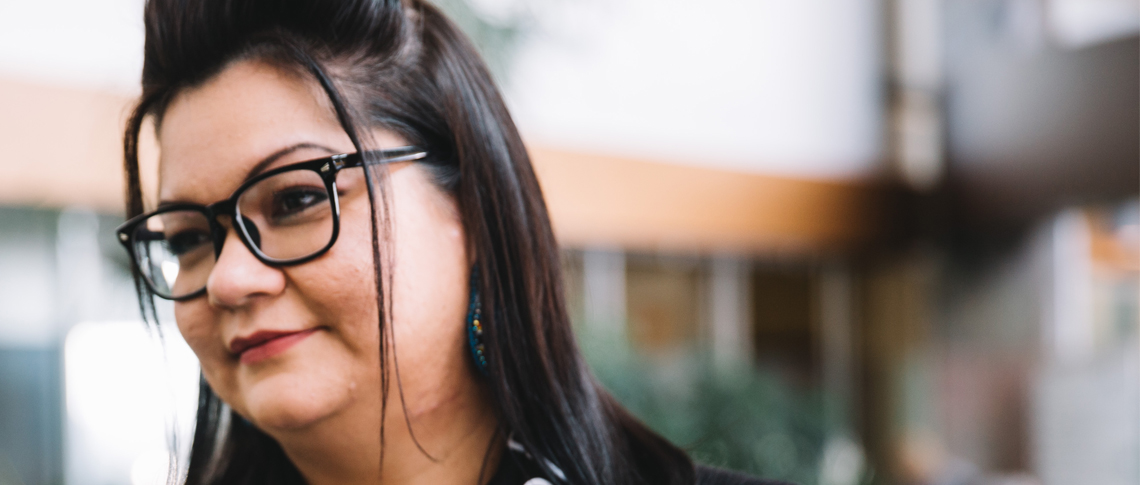
As told to Christy Weis
Chrystal is a Family Room coordinator at the Stollery Children’s Hospital in Edmonton, Alberta. Throughout her career with Alberta Health Services, she has held a number of administrative roles, including unit clerk and administrative assistant IV. In both positions, Chrystal has been empowered to customize her role and work on the things she’s truly passionate about.
The Family Room gives patients and their families a place to go to step away from the medical setting of the hospital. There’s a kitchen area with table and chairs, a living room area, books to read, and toys and games for the kids. It’s a place to relax and hang out, or to get some work done. Computers are available for people to print off forms, and we provide free faxing, scanning, and photocopying services.
We also host the Ronald McDonald House frozen meals. Families can come and grab a freezer meal and get a break from the cafeteria food. It’s also become a bit of a “hot spot” for Indigenous patients.
It’s a safe zone for families to come to and just feel comfortable. A culturally safe space where families feel free to just be.
Anyone can use it, as long as they aren’t in isolation. In addition to patients who are based at the Stollery, this room is open to patients of other facilities, such as the Mazankowski Heart Centre.
As the administrative support worker here at the Family Room, I get to be the first point of contact, that smiling face at the front desk, for the people who use this room. I assist everyone - both patients and families from the pediatric and adult side. Additionally, I preform administrative duties, looking after Patient-and Family Centred Care and Pediatric Social Work department files.
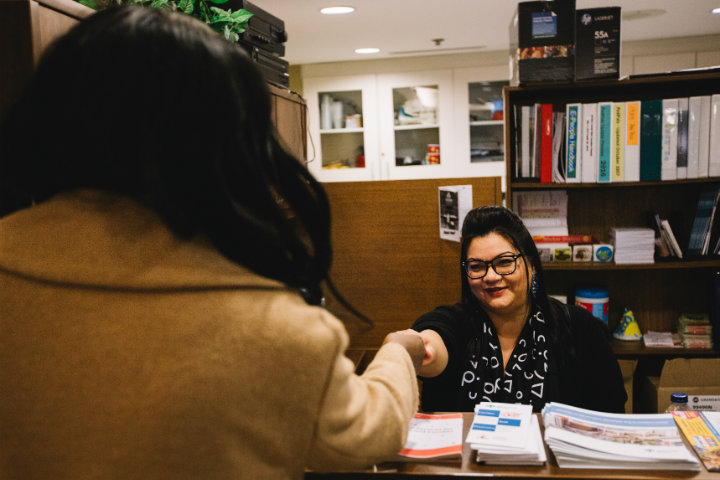
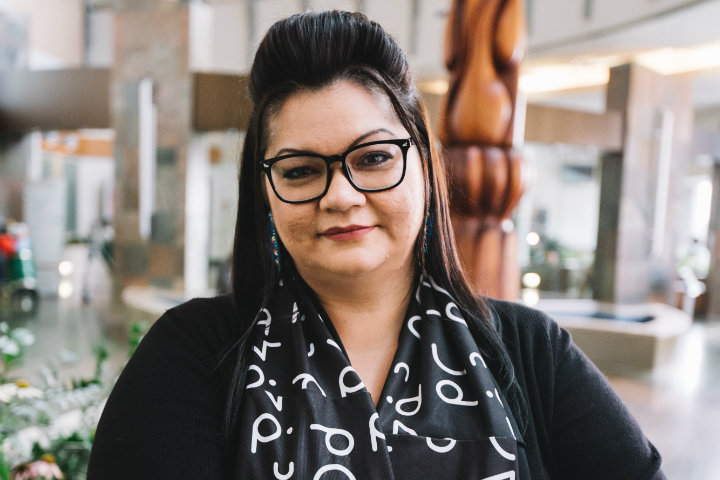
My favorite part is the people, absolutely, bar none. I love interacting with families and being able to bring some good, positive energy into their lives during a stressful time – right when they need it most. The children especially make my heart smile – they’re such warriors, and so resilient.
I’ve always been a compassionate person, and I’ve always wanted to help others
I decided to make a career change in my late twenties, when my son was born. I started out through NAIT’s Metis Employment Services program, and enrolled in the Health Sciences transition program, which provided the upgrading I needed to enroll in a range of healthcare-focused programs. Through the program, I got to take several hospital tours and was exposed to different occupations.
I job shadowed an Indigenous cultural helper, as well as an intensive care unit (ICU) nurse. I initially wanted to become a social worker, however when I re-evaluated my goals I found that the unit clerk role was the right fit for me.
Somebody with an open heart and an open mind. With these two things combined, compassion can easily flow through – and that’s what’s needed most.
I earned honour grades in my unit clerk program, and did my practicum in the Cardiovascular Intensive Care Unit (CVICU). From there, I started out in a casual position, moved to a temporary full-time, and then a full-time position in the ECG lab. It was a controlled-entry space in a dead-end corridor, and I realized there was a piece of my heart missing – I didn’t get to interact with people as much as I’d like. When I saw the posting for the administrative assistant position in the family room, I decided to give it a shot, and here we are.
As I reflect back on my positions within the hospital, I always had this constant, instinctual drive to reflect my Indigenous heritage in my position. I had an urge to reach out to Indigenous patients or get involved with Indigenous programs that are close to my heart.
My employer has always been very supportive of my journey – it’s amazing.
When I was In the CIVCU, I noticed the Indigenous families, who were often from a remote location, stressed, and out of their element – especially those who don’t speak English as their first language. Although I don’t speak fluent Cree, I can at least say hello, and make a point of being especially friendly and smiling. I noticed that they’d feel more comfortable when I came to the door as a friendly face. If they didn’t get one smile from anyone throughout the day, at least they’d get one from me.
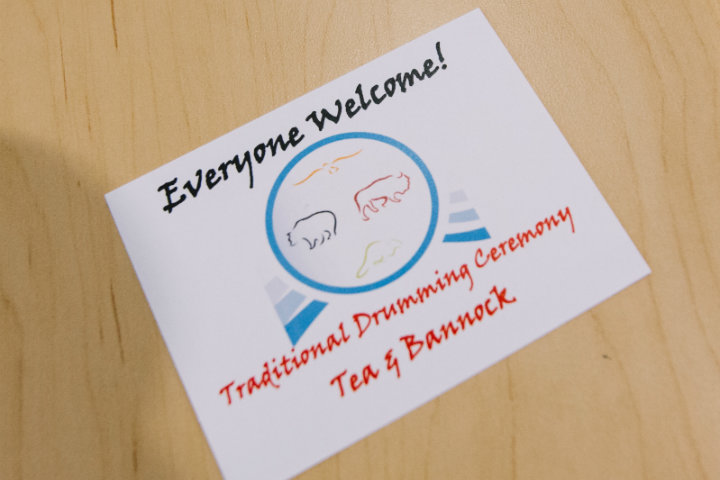
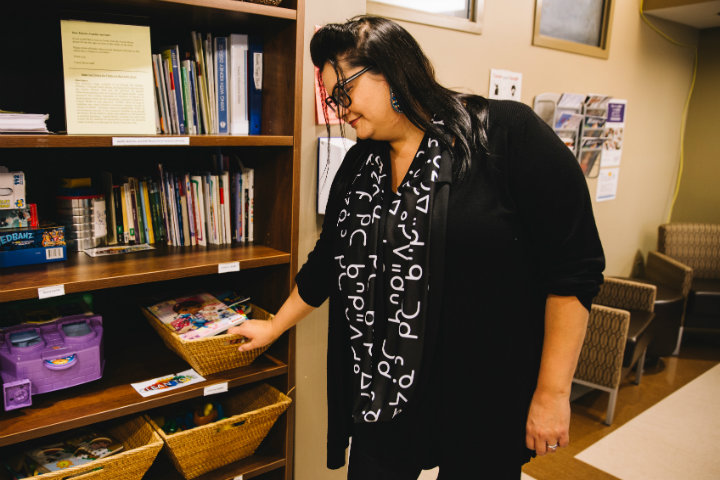
Some of the indigenous initiatives that I’m involved in stem from the Stollery Awasisak Indigenous Child Health program. “Awasisak” means “Many Children” in Cree, and is led by the Indigenous child health coordinator, who I work with through my position in the Family Room.
When I came on this this role, there was a lot of Indigenous-focused brainstorming going on. “Talking Circles” emerged as a means of getting information directly from our Indigenous patients, their families, and our staff. It also created an opportunity to learn how we can work better with Indigenous patients and provide them with better healthcare services.
The Talking Circles we held with Indigenous patients and families not only helped us improve, but honoured the Truth and Reconciliation Commission recommendations regarding Indigenous healthcare.
We held seven talking circles in all, at locations across the province. I was fortunate to attend two, in High Level and Fox Lake, which are very remote locations, as well as the one held in Edmonton. Several recommendations from those talks are being implemented right now, such as hiring more staff for the Awasisak program. It’s exciting to see real change taking place.
We hold drumming ceremonies four times a year. We try to hold them at the equinox, when seasons change. Our Elders recommended that we hold these ceremonies at the hospital to promote healing, not only for patients, but for the spirits of people who have passed on here – it gives them a way to be released.
We just finished hosting our seventh drumming ceremony, which is in our second year. It’s really catching on in the community. People are coming from all over Alberta to attend the ceremonies. The feedback we’ve received has been positive, with participants saying that the drumming provides comfort and support. Some people have said that it’s helped them with closure, or in recovering from grief or the trauma of being hospitalized.
We, in the Awasisak program, collaborate with Patient-and Family-Centred Care, Social Work, Spiritual Care, and the Indigenous Health Program. It’s beautiful to see this powerful ceremony and other initiatives being brought about by the cooperation and collaboration of this strong team. I’m honoured to be part of it.